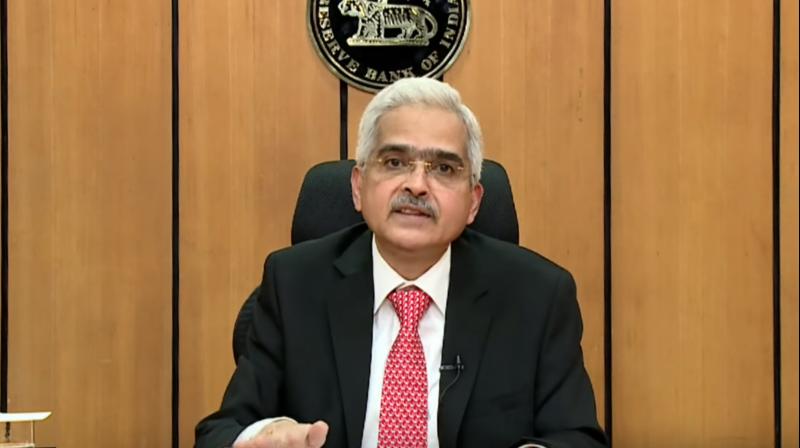
RBI pares FY23 GDP growth forecast to 6.8%, cites geopolitical tensions
Central bank projects India’s real GDP growth for 2022-23 at 6.8%; in April, it had cut the estimate from 7.8% to 7.2%, and further lowered it to 7% in September

The Reserve Bank of India (RBI) on Wednesday (December 7) lowered the country’s GDP growth forecast to 6.8 per cent for the current fiscal from 7 per cent earlier, on account of continued geopolitical tensions and tightening of global financial conditions.
India, however, remains a bright spot in the otherwise gloomy world and will be among the fastest growing major economies, said RBI Governor Shaktikanta Das while announcing the latest bi-monthly monetary policy. “The biggest risks to the outlook continue to be the headwinds emanating from protracted geopolitical tensions, global slowdown and tightening of global financial conditions,” he said.
Also read: EMIs set to go up as RBI’s Monetary Policy Committee hikes repo rate to 6.25%
Taking all these factors into consideration, the RBI projected the real GDP growth for 2022-23 at 6.8 per cent, with the third quarter at 4.4 per cent and the fourth at 4.2 per cent. Gross Domestic Product (GDP) growth is projected at 7.1 per cent for April-June period of 2023-24 and at 5.9 per cent for the following quarter.
“Even after this revision in our growth projection for 2022-23, India will still be among the fastest growing major economies in the world,” the Governor said.
Third successive cut
It is to be noted that it is for the third time this fiscal that the central bank has pared the growth projections for 2022-23. In April, it had cut the GDP growth estimate from 7.8 per cent to 7.2 per cent, and further lowered it to 7 per cent in September.
As per official government data, the GDP growth in the second quarter of the fiscal slowed to 6.3 per cent from 13.5 per cent in the preceding three months.
For the Indian economy, Das said, the outlook is supported by good progress of rabi sowing, sustained urban demand, improving rural demand, a pick-up in manufacturing, rebound in services and robust credit expansion.
Consumer price inflation moderated to 6.8 per cent (y-o-y) in October as expected, but it still remains above the upper tolerance band of the target. Core inflation is exhibiting stickiness. “While headline inflation may ease through the rest of the year and Q1 2023-24, it is expected to rule above the target,” he said.
Hedging gold price risks at IFSC
Das also said on Wednesday that resident entities from India will now be permitted to hedge gold price risks at the International Financial Services Centre (IFSC). At present, resident entities in India are not permitted to hedge their exposure to gold price risk in overseas markets.
Also read: GIFT City wants to do a Paris or Dubai; its pros & cons as a finance hub
“With a view to providing greater flexibility to these entities to hedge the price risk of their gold exposures efficiently, it has been decided to permit resident entities to hedge their gold price risk on recognised exchanges in the IFSC,” Das said after announcing the bi-monthly policy review. The detailed instructions on the same will be issued separately by the central bank, he added.
With agency inputs

